Summary | Excerpt | Reviews | Beyond the Book | Read-Alikes | Genres & Themes | Author Bio
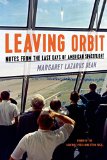
 Book Reviewed by:
Book Reviewed by:
Poornima Apte
Buy This Book
This article relates to Leaving Orbit
In Leaving Orbit, Margaret Lazarus Dean celebrates the utilitarian model of spaceflight as imagined by the Shuttle program, which was initiated in 1981.
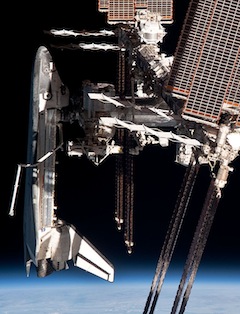 Before Shuttle, during the "heroic" era of spaceflight, small capsules were launched into space on the backs of rockets and disintegrated over the ocean upon the rockets' reentry and landing. The large spaceships of the Shuttle program, however, were designed to get to space and return so they could be reused. "From the start, the idea of the shuttle had been an idea for a fleet, with the reliability that comes with multiple identical vehicles," Lazarus Dean explains. "One orbiter could be prepared for flight while another was in space and yet another undergoing repairs. Ultimately, the fleet was to consist of five orbiters, taking astronauts and cargo to space with a regularity more like a commercial airline's than the risky one-off ventures of Mercury, Gemini, and Apollo."
Before Shuttle, during the "heroic" era of spaceflight, small capsules were launched into space on the backs of rockets and disintegrated over the ocean upon the rockets' reentry and landing. The large spaceships of the Shuttle program, however, were designed to get to space and return so they could be reused. "From the start, the idea of the shuttle had been an idea for a fleet, with the reliability that comes with multiple identical vehicles," Lazarus Dean explains. "One orbiter could be prepared for flight while another was in space and yet another undergoing repairs. Ultimately, the fleet was to consist of five orbiters, taking astronauts and cargo to space with a regularity more like a commercial airline's than the risky one-off ventures of Mercury, Gemini, and Apollo."
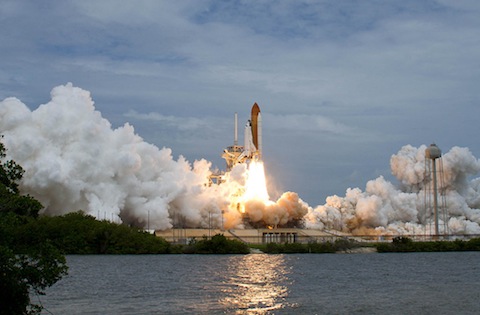 The shuttles left from Cape Canaveral Space Station in Florida on missions that lasted from a couple of days to a week or more. Specially equipped with robotic arms and large cargo bays, the shuttles were used for routine satellite repairs and creating the International Space Station, a permanent laboratory outpost in space. Five shuttles in all — Atlantis, Columbia, Challenger, Discovery and Endeavour — clocked 135 flights over the Shuttle program's three-decade long run, which formally ended in July 2011 when Atlantis returned after a 13-day trip to deliver parts and supplies to the International Space Station.
The shuttles left from Cape Canaveral Space Station in Florida on missions that lasted from a couple of days to a week or more. Specially equipped with robotic arms and large cargo bays, the shuttles were used for routine satellite repairs and creating the International Space Station, a permanent laboratory outpost in space. Five shuttles in all — Atlantis, Columbia, Challenger, Discovery and Endeavour — clocked 135 flights over the Shuttle program's three-decade long run, which formally ended in July 2011 when Atlantis returned after a 13-day trip to deliver parts and supplies to the International Space Station.
Of the five shuttles, two met with tragic endings including the Challenger disaster in 1986, which many children watched live on television because one of the flight crew was a New Hampshire schoolteacher, Christa McAuliffe (see Beyond the Book for My Sunshine Away). In February 2003, Columbia disintegrated over Texas just a few minutes before landing.
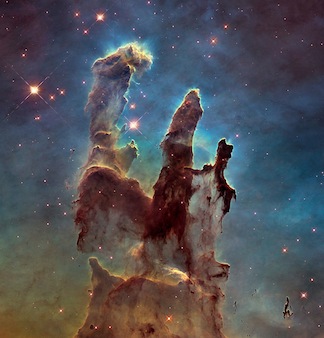 Despite these tragedies, the shuttle program contributed significantly to our understanding of the universe, most noticeably with the April 1990 launch of Discovery, which set the Hubble Space Telescope into operation. Incidentally initial images from Hubble were a touch blurred, but after a 1993 repair by the crew of Endeavour, the Hubble transmitted crystal-clear images back to earth. (This is a story too long to tell but one worth reading about as a great example of creativity and ingenuity.) The images from the Hubble are breathtaking and continue to greatly expand our knowledge of the universe.
Despite these tragedies, the shuttle program contributed significantly to our understanding of the universe, most noticeably with the April 1990 launch of Discovery, which set the Hubble Space Telescope into operation. Incidentally initial images from Hubble were a touch blurred, but after a 1993 repair by the crew of Endeavour, the Hubble transmitted crystal-clear images back to earth. (This is a story too long to tell but one worth reading about as a great example of creativity and ingenuity.) The images from the Hubble are breathtaking and continue to greatly expand our knowledge of the universe.
The Shuttle program was also responsible for sending Sally Ride, the first woman astronaut, into space on board the Challenger in 1983. The three remaining shuttles and a prototype are now housed in museums across the country.
Endeavor, docked with the International Space Station, courtesy of Soerfm
Atlantis, beginning the last mission of the Space Shuttle Program, in 2011, courtesy of Mark Schierbecker
One of Hubble's most famous images, "Pillars of Creation" shows stars forming in the Eagle Nebula, courtesy of Crisco 1492
Filed under Medicine, Science and Tech
![]() This article relates to Leaving Orbit.
It first ran in the June 17, 2015
issue of BookBrowse Recommends.
This article relates to Leaving Orbit.
It first ran in the June 17, 2015
issue of BookBrowse Recommends.



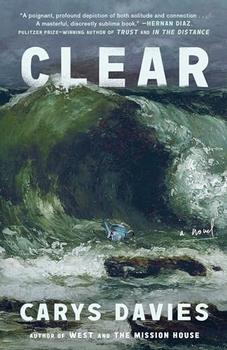
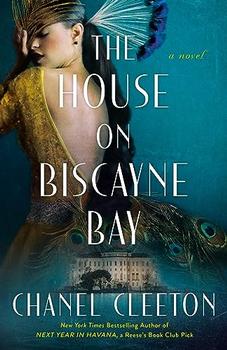
The House on Biscayne Bay
by Chanel Cleeton
As death stalks a gothic mansion in Miami, the lives of two women intertwine as the past and present collide.

The Flower Sisters
by Michelle Collins Anderson
From the new Fannie Flagg of the Ozarks, a richly-woven story of family, forgiveness, and reinvention.

The Funeral Cryer by Wenyan Lu
Debut novelist Wenyan Lu brings us this witty yet profound story about one woman's midlife reawakening in contemporary rural China.
Your guide toexceptional books
BookBrowse seeks out and recommends the best in contemporary fiction and nonfiction—books that not only engage and entertain but also deepen our understanding of ourselves and the world around us.